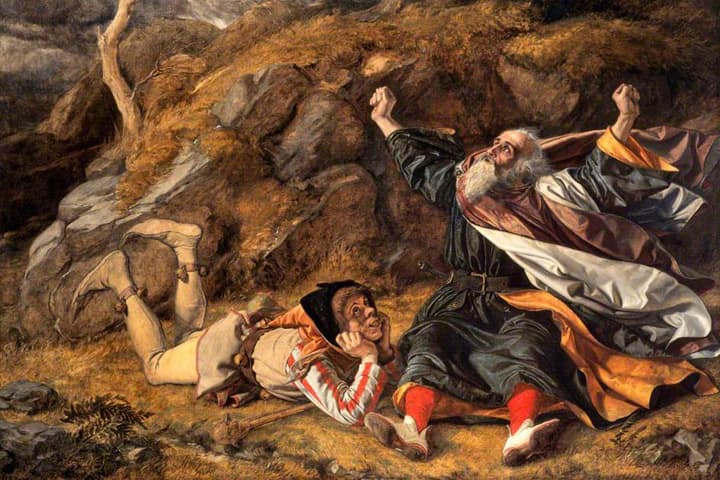Advertisement
1606: Shakespeare’s ‘Year of Lear’
Resume1606 was a year of plague, terror fallout, religious strife – and “King Lear.” We’ll look with a top Shakespeare scholar at the year of Lear.

Sixteen hundred and six was a hell of a year in old England. Terrorism. Health panic. Uproar over borders and cultures, immigration and religion. Sound familiar? It should. But unlike now, the great William Shakespeare was there. Watching, listening, feeling, writing. While plague and the “gunpowder plot” and fear of foreigners swirled around him. He came out with three great tragedies that year. "Macbeth." "Antony and Cleopatra." And the great, bitter tale, "King Lear." They darkly, deeply lit his time, and maybe ours. This hour On Point, 1606, the year of Lear, and what Shakespeare tells us now.
-- Tom Ashbrook
Guest
James Shapiro, professor of English at Columbia University. Author of the new book, "The Year of Lear: Shakespeare in 1606." Also author of "Contested Will" and "1599." Editor, "Shakespeare in America."
From Tom’s Reading List
Washington Post: How politics shaped Shakespeare’s masterworks — "Shapiro begins by reminding us that Shakespeare, the archetypal Elizabethan dramatist, might have been having some trouble adjusting to the new Jacobean age. In 1603, King James of Scotland acceded to the English throne, and in the nearly three years since then the usually prolific man from Stratford had apparently composed only two plays, the dark and bitter 'Measure for Measure' and the misanthropic 'Timon of Athens.'"
The Guardian: A fraught political and cultural moment — "In England in 1606 the political landscape was dominated by a single event – the gunpowder plot of November 1605. This act by a desperate clique of Catholics – '5/11' as it is now sometimes called – had an explosive effect, even though the actual explosion was foiled. Its aftershocks are felt throughout Lear and Macbeth. They are plays that focus grimly on regicide, on civil strife, on a swift descent into violence and anarchy; and they are steeped in a gothic atmosphere of devils and hellfire that reflects the imagery of the plot fostered in government-approved pamphlets and engravings, and in the prosecution speeches of Sir Edward Coke and others."
The Wall Street Journal: How Leir Became Lear — "The book is crammed with stimulating research that again and again produces startling connections. The chapter on the plague—its extent and its hideous symptoms—is continually shocking, not least the information that when people suspected their neighbors of being infected, they would often seal up the afflicted houses, with the occupants inside, so if the plague didn’t kill them, starvation would."
Read An Excerpt Of "The Year Of Lear" By James Shaprio
https://www.scribd.com/doc/286322207/Excerpt-from-The-Year-of-Lear-by-James-Shapiro
This program aired on October 22, 2015.